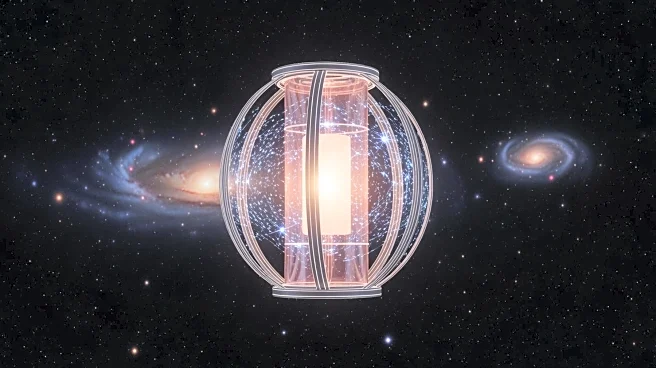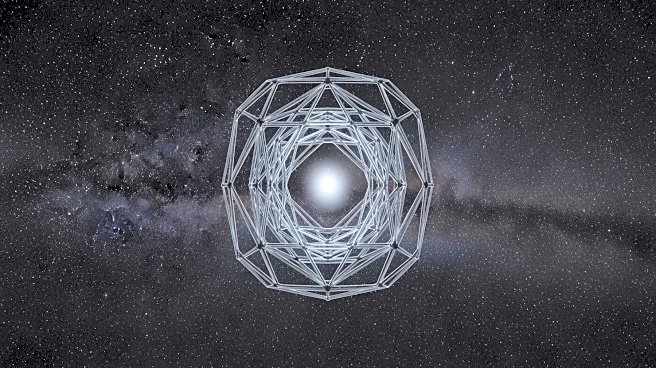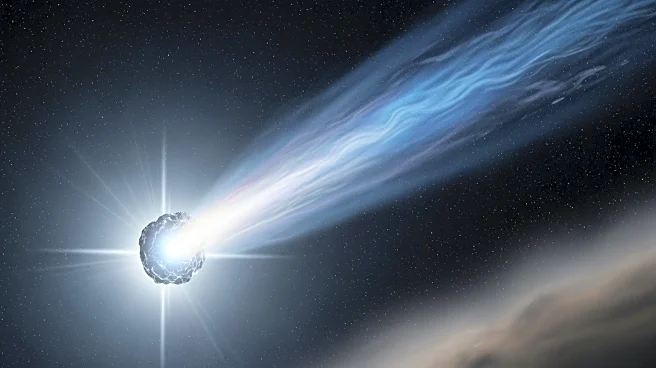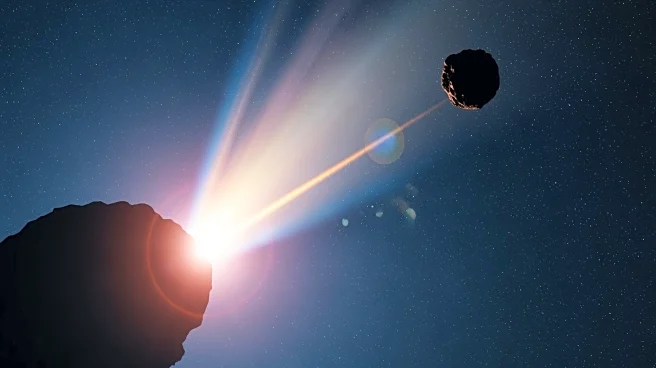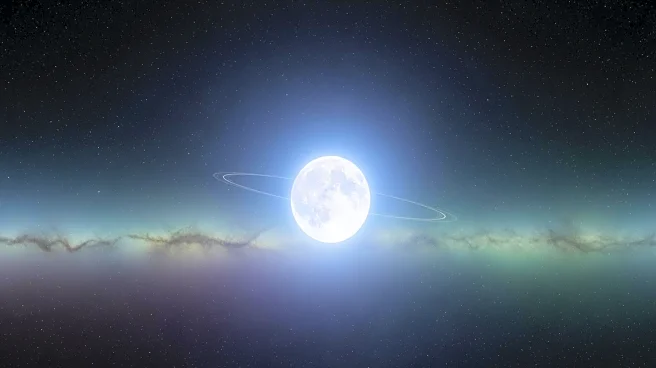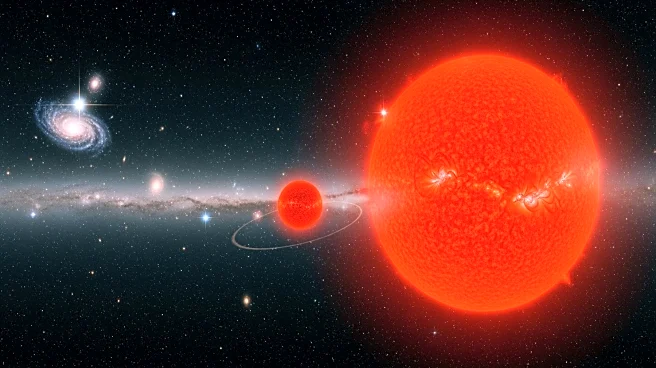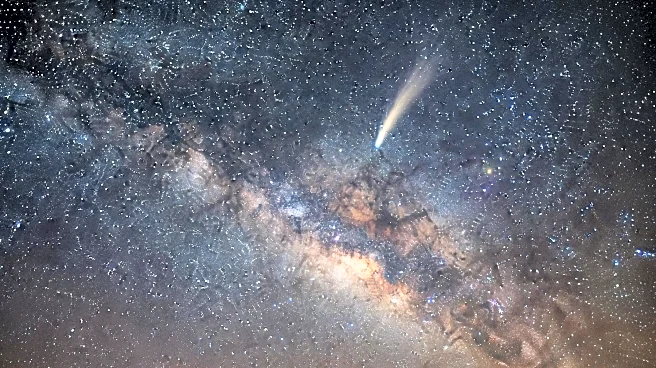What's Happening?
A team led by UCLA has developed a new imaging technique using a device called a photonic lantern, which significantly enhances the resolution of telescopic images. This innovation was tested at the Subaru
Telescope in Hawaii, focusing on the star Beta Canis Minoris. The photonic lantern works by splitting incoming starlight into its spatial patterns, allowing for the reconstruction of images with unprecedented detail. This method revealed asymmetries in the star's surrounding hydrogen gas disc that were previously undetectable with conventional imaging techniques. The team had to develop new data processing techniques to handle atmospheric interference, achieving a fivefold improvement in measuring color shifts caused by the Doppler effect.
Why It's Important?
This breakthrough in astronomical imaging has the potential to revolutionize the study of celestial bodies by providing more detailed observations than previously possible. The ability to detect subtle structures around stars can lead to new discoveries in astrophysics and enhance our understanding of the universe. This advancement could benefit scientific research institutions and potentially lead to new technologies in optical imaging. The improved resolution may also aid in the study of exoplanets and other distant celestial phenomena, offering insights that could influence future space exploration and research priorities.
What's Next?
The success of the photonic lantern technique may prompt further research and development in optical imaging technologies. Other observatories might adopt this method to enhance their own capabilities, potentially leading to a new standard in astronomical imaging. The team may continue to refine the technology and explore its applications in different observational contexts. Additionally, the findings could stimulate interest in developing similar technologies for other scientific fields that rely on high-resolution imaging.
